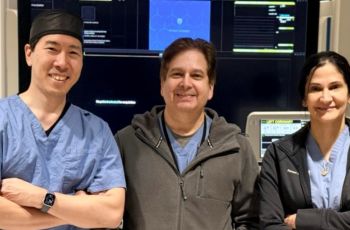
WASHINGTON (May 16, 2014) — Sufferers of a common sleep-breathing disorder have diminished activity among neurons responsible for keeping heart rate low, reveals a new study published today in The Journal of Physiology.
David Mendelowitz, Ph.D., vice chair and professor of pharmacology and physiology at the George Washington University School of Medicine and Health Sciences, discovered that in obstructive sleep apnoea (OSA), neurons in the brainstem that control heart rate experience a blunting of their activity. The reduction of neuronal activity likely contributes to the increased heart rate, blood pressure, and risk of adverse cardiovascular events that occur in patients with OSA.
“Lack of sleep leaves the mind and body tired, leading to poor mental and physical performance, and if untreated OSA increases a person’s risk of developing hypertension and irregular heartbeats,” said Mendelowitz. “Therefore, it is very important that we have discovered some of the underlying mechanisms that could injure the heart and other cardiovascular tissues.”
OSA is a common cardiovascular disease, occurring in 24 percent of adult males and 9 percent of adult females, which causes repetitive interruptions of breathing during sleep. Lack of oxygen during these episodes brings the person to a lighter state of sleep or brief wakefulness to restore normal breathing. Cycles of interrupted breathing and arousal from sleep can occur as frequently as once per minute.
“Our study shows that progression of blunted cardiovascular reflexes is accompanied, and likely maintained by, inhibition of neurons in the brainstem that protect the heart and normally maintain a low resting heart rate,” said Mendelowitz. “This study would predict that patients who have OSA, and also take sleep medicines, might be at heightened risk for an exaggerated reduction of essential neuronal activity that protects the heart.”
The abstract is available to view on AHA Journals.
###
This Press Releases posted courtesy of The Journal of Physiology.


